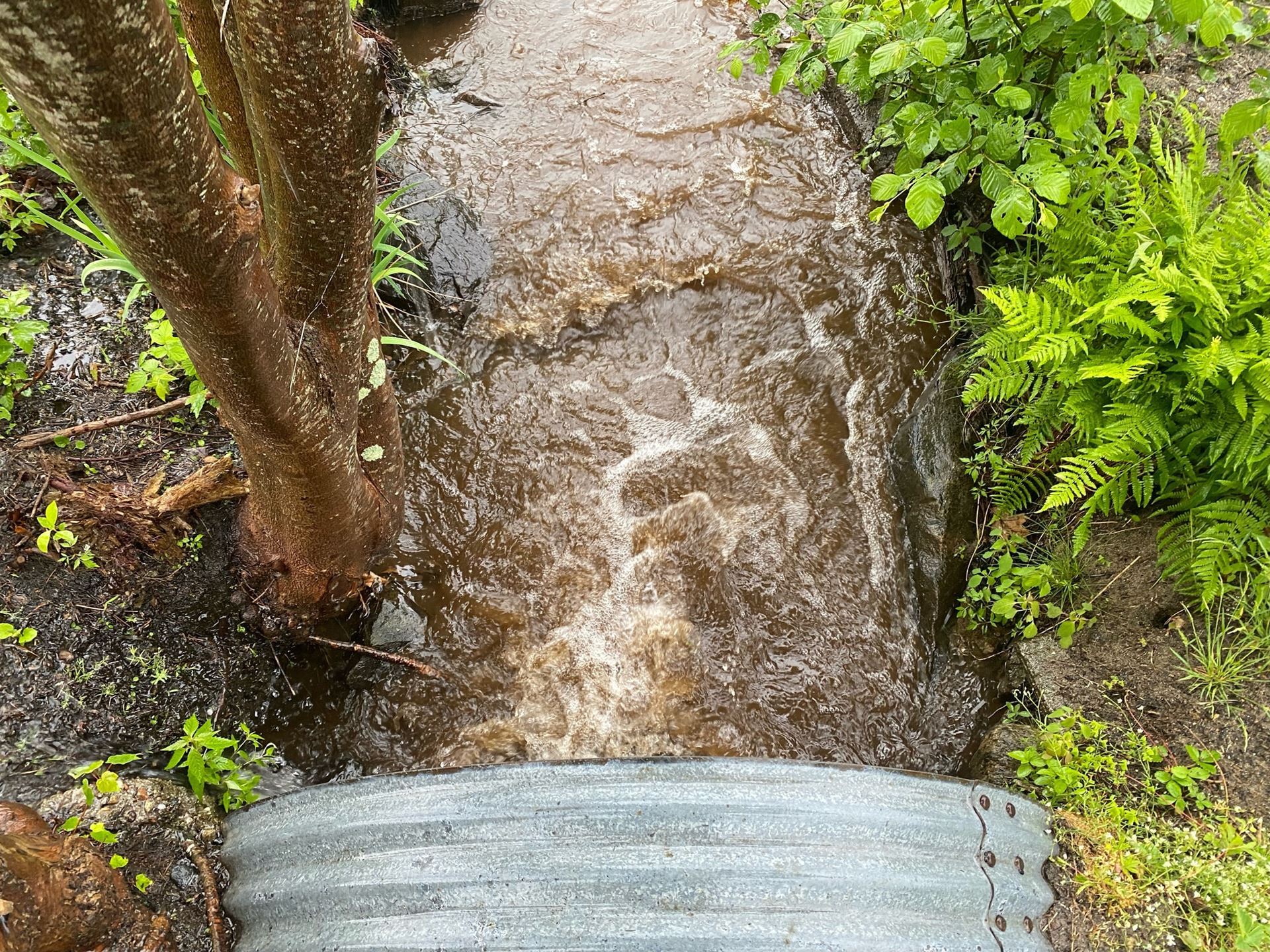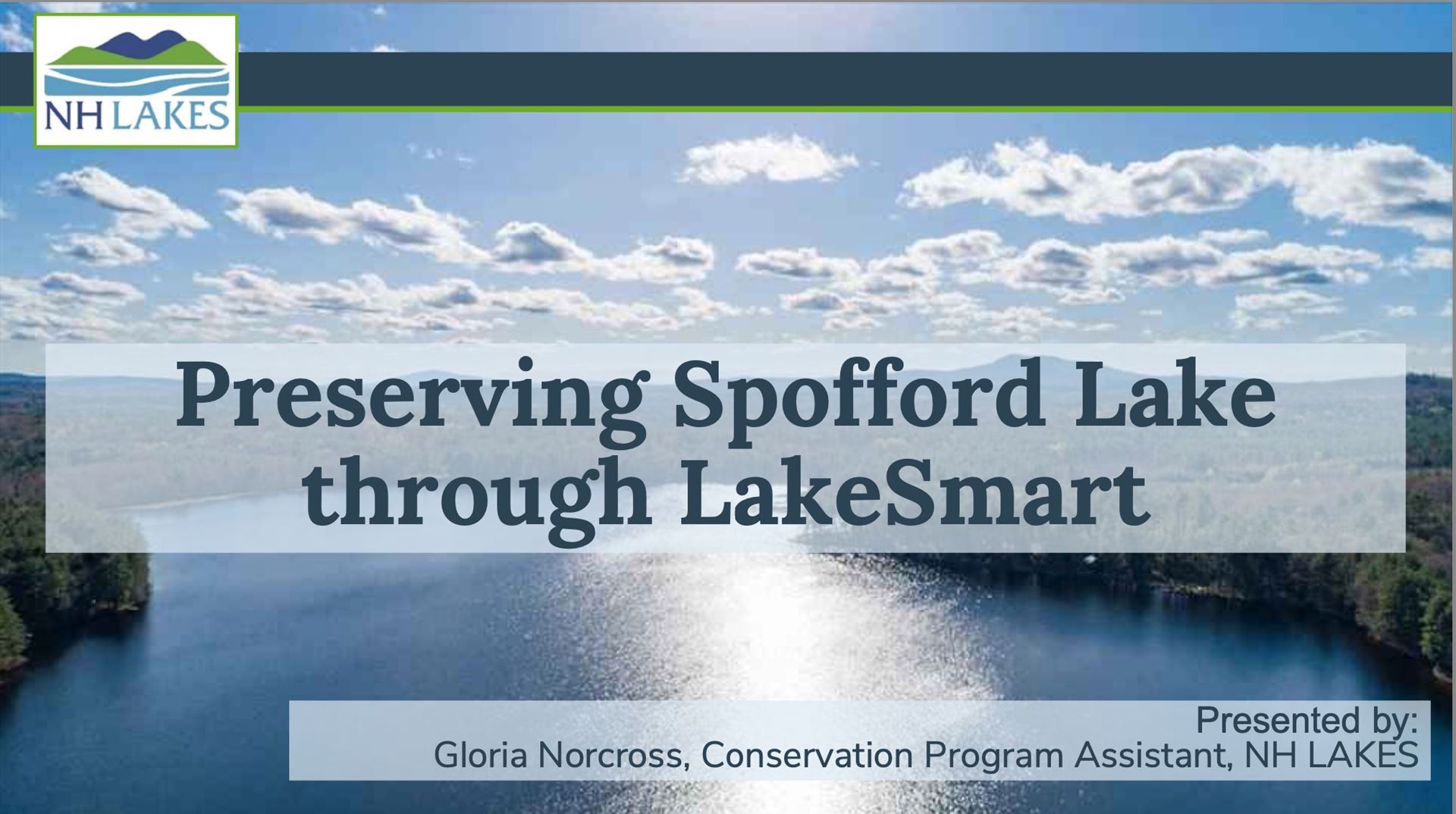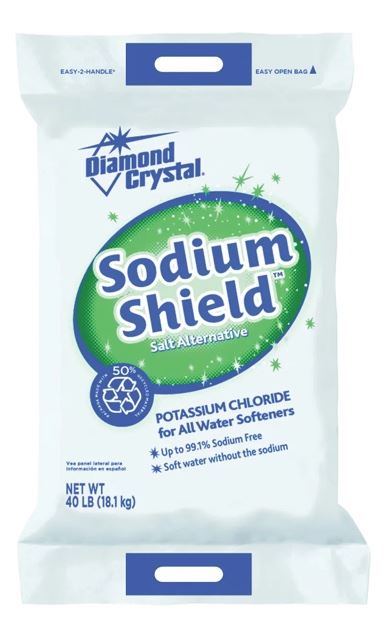Reducing Stormwater Runoff
What is stormwater runoff? It is water from rain or melting snow that does not soak into the ground and therefore flows directly into the Lake. Why should I be concerned about it? Runoff carries pollutants, e.g., phosphorous into lakes, ponds, streams, creating unsafe conditions for swimming and unsafe habitat for fish and other animals. According to DES, stormwater runoff contributes to over 90% of the water quality problems in New Hampshire. In the case of Spofford Lake, runoff is a chief contributor to increasing levels of phosphorus and declining levels of dissolved oxygen. When eroded soil enters the Lake, both the phosphorus and nitrogen that is released from the soil contribute to eutrophication. Stormwater runoff can also discharge bacteria (e.g., E. coli) and other contaminants into the Lake. While every property in a watershed has the potential to impact water quality, shoreland properties have a direct impact on the health of the waterbodies on which they are located and therefore have unique opportunity and responsibility to protect New Hampshire ’s surface waters. Why the focus on phosphorus? Phosphorus, essential for both plant and animal growth, is found in soil, animal manure, most man-made fertilizers, stormwater runoff, and human waste. The Spofford Lake Watershed Management Plan estimated total phosphorous loading by source to be: 50%, comes from watershed runoff flowing into the Lake, 25% atmospheric, 15% septic systems (likely underestimated), 6% internal loading, and 4% waterfowl. Phosphorous is typically the plant growth-limiting nutrient in lakes. If phosphorous is unavailable or in low amounts, plant growth in aquatic systems will stay in check. When there is an abundance of phosphorous, plants tend to grow to excessive levels. Excess plant growth (both algae and rooted plants) is usually associated with a condition known as 'eutrophication,' which eventually leads to declining water quality. Again, what is eutrophication? According to the Oxford Dictionaries, eutrophication is “excessive richness of nutrients in a lake or other bodies of water, frequently due to runoff from the land, which causes a dense growth of plant life and death of animal life from lack of oxygen.” The process of decay can deplete the water of oxygen and may give rise to algal blooms and reduction of fish species. Spofford Lake exhibits three characteristics of eutrophication: 1) oxygen impairment, 2) reduction in fish stocks and, 3) algal blooms, most notably cyanobacteria blooms in 2000, 2021, and 2022. |
How are the SLA and Town proceeding to reduce runoff into the Lake?
To avoid potential taxpayer expense, both the SLA and Town have sought out grant monies. But before any grant application could be filed, a prerequisite must be fulfilled, i,e., the completion of a watershed management plan (WMP).
What is the Spofford WMP?
Spofford Lake Watershed Management Plan (WMP), concluded in 2018, was made possible by yet another grant, this time by a Section 604(b) grant offered by U.S. EPA Clean Water Act. The EPA stipulates that any watershed-based plan must have a clear water quality goal and meet EPA requirements, including making reasonable progress toward achieving the water quality goal established in the watershed plan.
By design, grants are administered by third-party organizations. For SLA, the Southwest Regional Planning Commission (SWRPC) filled that role. The SWRPC, in turn, hired Dover-based FB Environmental to do the field work and prepare recommended actions, pages 34-40 of the plan. With the WMP done, NH Section 319 runoff grants became possible.
How do Section 319 grants work?
NH DES offers Section 319 grants as part of its Watershed Assistance Program (WAP). The State solicits projects to address “nonpoint source pollution (NSP)” through the implementation of watershed-based plans in priority watersheds. Projects must have a measurable way to assess progress and determine success. Section 319 grants, also require a third-party intermediary (see above '319 Grant Overview). Again, the SLA has used the SWRPC and FBE.
What 319 grants has the SLA received?
SLA has sought out two NH DES 319 runoff grants. The first, obtained in 2019, addressed issues at larger properties e.g., Camp Spofford, the Spofford Yacht Club, B&K Club, Family Rec Beach, and several private residences. The total project is valued at $133,333 of which the grant provides $80,000 (60%) in financial support, i.e., for consultants and remediation materials. The remaining 40% ($53,333) comprises volunteer time or expenses related to 'improving the water quality of Spofford Lake.’
The SLA has been approved for second grant ($188,775) which will focus on runoff from Route 9 to the intersection of South Shore Rd and Route 9A. Several other private properties will be included. Like the first grant, this grant provides $113,265 (60%), i.e., for consultants and remediation materials and 40% ($75,510) comprises volunteer time /supplies. Much of the work was completed in the Spring of 2024.
How were candidate properties chosen?
Once the grant is awarded, properties are chosen by FBE after need has been determined. Property owners agree to the grant's specifications and the work proceeds within the scope of the available funds.
What actions has the Town of Chesterfield taken?
The Town has applied for a $100,000 Clean Water State Revolving Fund (CWSRF) planning grant to mitigate runoff damage from Pinnacle Springs Road, which is most visible in the Bennet Road area, flowing across Route 63 and into the Lake.
The grant application is characterized as a comprehensive ‘top to bottom’ plan. To prepare the pre-application, the SLA Board of Directors approved, on behalf of the Town, a $2,500 expenditure to fund the filing of the application. Upon distribution of funds, the SLA will be reimbursed these monies by the Town. At its spring 2023 Town meeting, voters agreed to participate in this project. Planning work is underway and is expected to be complete in 2025.
As a homeowner, what actions can I take on my property to minimize runoff?
3. Be in conformity with the woodland buffers provisions of the Shoreland Water Quality Protection Act. Well managed shoreland properties provide a natural buffer with trees and other vegetation that intercept surface runoff. Shoreland buffers reduce the effects of nutrients, sediment, and other pollutants, moderate temperature, prevent erosion, and provide critical habitat and food sources to native wildlife. 4. Use sodium-free alternatives in your water softening systems. Standard salt brine finds its way through your septic system into the water table and the Lake. Diamond Crystal Salt Alternative is available at the Agway in Brattleboro. 5. Reach out to the SLA to see if your property might be eligible for and included in any of the 319 grant projects. Page updated October 24, 2024 | NH Homeowner's Guide to
|





